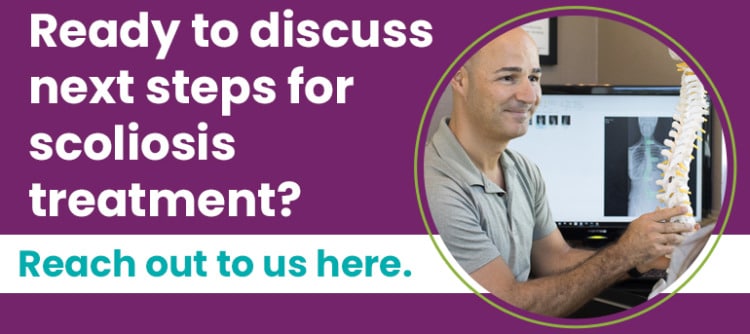Squatting with Scoliosis: Safety Guidelines and Tips
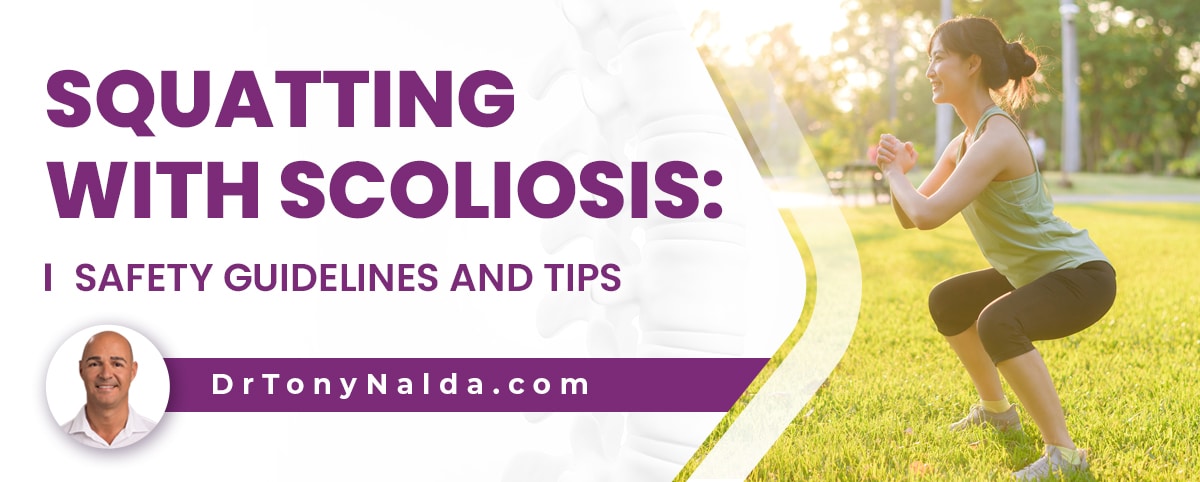
Squatting is a low-impact exercise that can easily be performed from home without the need for equipment. It's used to burn calories, strengthen the core, lower back, and legs. People with scoliosis can benefit from increasing core strength as this means more support for the spine and better posture.
For people with scoliosis, all types of exercise, including squatting, should be cleared by a patient's treatment provider. Squatting with proper form can improve mobility, balance, flexibility, and strength. Part of conservative scoliosis treatment involves core strengthening for more spinal stability and support.
Staying strong and active can help scoliosis patients by increasing core strength and spinal flexibility for a spine that's more responsive to treatment.
Table of Contents
Understanding Scoliosis
Understanding scoliosis means understanding how it affects the body, and as an unnatural sideways-bending and rotating spinal curve develops, its effects can be widespread.
Scoliosis introduces a lot of uneven forces to the spine and body that disrupt its balance and stability.
As a progressive condition, the nature of scoliosis is to become more severe over time, and this makes its effects more noticeable.
The main effects of scoliosis in children involve postural changes like uneven shoulders, shoulder blades, hips, the development of a rib cage arch, and disruptions to balance, coordination, and gait are also common.
As a progressive condition, scoliosis is always changing, and it can range from mild to moderate, severe and very severe cases.
The more severe a scoliosis is, the larger the size of the unnatural spinal curve, the more rotation there is, the more it will progress, and the more likely activity and exercise restrictions are.
Because a scoliotic spine is exposed to uneven forces and adverse spinal tension, certain exercises and activities need to be approached with caution, while others should be avoided entirely.
In general, exercise that strains the spine, involves hyperextension, overuses one side of the body, and/or involves repeated shock from impact should be avoided, but what about squatting?
How to Perform a Squat with Proper Form
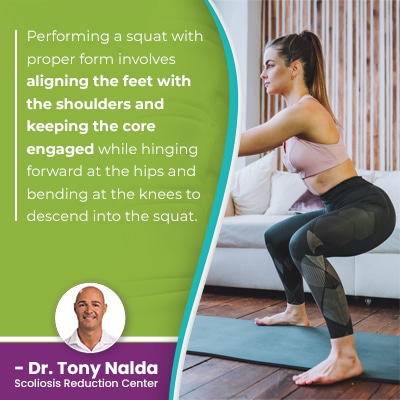 Performing a squat with proper form involves aligning the feet with the shoulders and keeping the core engaged while hinging forward at the hips and bending at the knees to descend into the squat.
Performing a squat with proper form involves aligning the feet with the shoulders and keeping the core engaged while hinging forward at the hips and bending at the knees to descend into the squat.
Keeping the thighs parallel to the floor while in the squat is important, as is keeping the back straight. Keeping the spine straight, in proper alignment, and in a neutral position means no extra stress is being introduced to the spine.
If not performed in proper form, hyperextension can be introduced to the lumbar spine, and this can exacerbate scoliosis.
The core should also be engaged, and being mindful of body position while squatting is something that should be further integrated into daily activities for better posture: intentional movement is a big part of leading a spine and scoliosis-friendly lifestyle.
Being mindful of form is similar to being mindful of posture.
When cleared by a scoliosis treatment provider, patients can squat to improve their core strength and core stability, leg strength, muscle strength, and to help maintain a healthy weight.
Maintaining a healthy weight is important for people with scoliosis as carrying excess weight means more strain on the joints and spine; it's also more difficult to diagnose scoliosis in overweight individuals as the spine and related trunk asymmetries aren't as visible.
In general, if a patient feels pain or discomfort during an exercise, they should stop and seek medical advice from a professional.
Benefits of Squatting for Scoliosis Patients
Healthy weight management is a benefit of squatting, and when it comes to people with scoliosis, anything that increases core strength means more support and stability for the spine.
In fact, a key focus of conservative treatment is on improving the spine's surrounding muscle balance and strength for optimal spinal support and stability.
A spine that's well supported by its surrounding muscles is a spine that has help maintaining its natural curves and alignment.
A healthy spine is important for overall health; it helps us engage in a wide range of movement, protects the spinal cord, important organs, gives the body structure, and facilitates healthy posture.
A strong core is one that's more stable and can support healthy posture; over time, chronic poor posture can strain the spine and change its position.
As an asymmetrical condition, scoliosis disrupts the spine's balance and alignment, and this disrupts the body's overall balance and stability.
Squatting is also an exercise that uses the body's muscles symmetrically so it doesn't exacerbate the condition's asymmetrical effects.
Now squatting the body's weight is different from squatting with weights, which in most cases of scoliosis is too strenuous for the spine.
Squatting with weights puts pressure on the spine and can also strain its surrounding muscles.
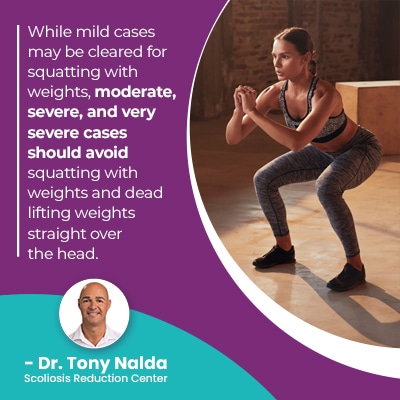 While mild cases may be cleared for squatting with lighter weights, moderate, severe, and very severe cases should avoid squatting with weights and dead lifting weights straight over the head.
While mild cases may be cleared for squatting with lighter weights, moderate, severe, and very severe cases should avoid squatting with weights and dead lifting weights straight over the head.
What Other Exercises are Safe for Scoliosis Patients?
There was once a time when the place of exercise in the lives of scoliosis patients was questioned, and there was also a time when the place of exercise in scoliosis treatment was unknown, but we have since learned that effective exercises have a lot of power and potential to impact scoliosis in different ways.
While general exercise is limited in what it can do for scoliosis patients, scoliosis-specific exercises are designed and prescribed by scoliosis physical therapists and treatment providers to help facilitate successful treatment results.
Maintaining a healthy weight, increasing core strength, and increasing spinal flexibility can make the spine and body more responsive to treatment.
Again, each case of scoliosis will come with its own activity recommendations/restrictions, but planking is generally considered a safe exercise that can help increase core strength, works the body's muscles symmetrically, and is low impact and doesn't strain the spine.
Regular stretching and certain yoga poses can also help increase the spine's flexibility, making it more responsive to chiropractic treatment, and pelvic tilts and leg raises can help maintain mobility in the lower body and increase spinal support.
Chest expander exercises can also help open up space within the chest and spine to counteract compression.
Scoliosis-specific exercise can be an effective facet of conservative scoliosis treatment, helping patients in many ways from pain relief to increasing spinal flexibility, improving posture, and strengthening the spine's surrounding muscles.
Treating Scoliosis
The best way to minimize the potential effects of scoliosis is to treat it proactively.
While traditional scoliosis treatment can funnel patients towards spinal fusion surgery, conservative treatment has the goal of preserving as much of the spine's natural strength and function as possible.
Conservative treatment uses the power of exercise to help improve the spine and body's alignment, strength, and balance, and curve progression can be managed in many cases.
While there are no treatment guarantees, with early detection and intervention, there are fewer limits to what conservative treatment can achieve.
Conclusion
Scoliosis patients need to have activities, sports, and exercises cleared by their treatment providers, but in most cases, squatting with the body's weight is considered safe, while squatting with weights needs to be approached with caution, modified, and/or avoided completely.
Performing a squat with proper form involves maintaining spinal alignment, a neutral spine, engaging the core muscles, and building strength.
Strong back and core muscles help support the spine, and a scoliosis-specific workout plan can help facilitate corrective treatment results.
Scoliosis is also associated with a muscular imbalance as the spine's unnatural bend and twist can pull its surrounding muscles in different directions, causing the muscles on one side of the spine to become sore from overuse and muscles on the opposite side to become weak from lack of use.
Squatting doesn't overuse one side of the body so won't exacerbate muscle imbalances and further strain the scoliosis curve; scoliosis exercises that involve weight lifting have to be approached with caution.
Weight lifting can strain the spine, but that doesn't mean all scoliosis patients can't perform weightlifting exercises and squat with weights; activity recommendations/restrictions will be case specific with severe scoliosis and very severe scoliosis cases commonly involving more-noticeable symptoms and activity restrictions.
As a progressive condition triggered by growth, scoliosis management has to be proactive, and nonsurgical scoliosis treatments can include chiropractic care, physical therapy, scoliosis exercises, corrective bracing, and rehabilitation.
Here at the Scoliosis Reduction Center®, treatment is customized. Patients are provided with personalized guidance to help cultivate a healthy activity level, including exercise restrictions and recommendations.
Dr. Tony Nalda
DOCTOR OF CHIROPRACTIC
After receiving an undergraduate degree in psychology and his Doctorate of Chiropractic from Life University, Dr. Nalda settled in Celebration, Florida and proceeded to build one of Central Florida’s most successful chiropractic clinics.
His experience with patients suffering from scoliosis, and the confusion and frustration they faced, led him to seek a specialty in scoliosis care. In 2006 he completed his Intensive Care Certification from CLEAR Institute, a leading scoliosis educational and certification center.
About Dr. Tony Nalda
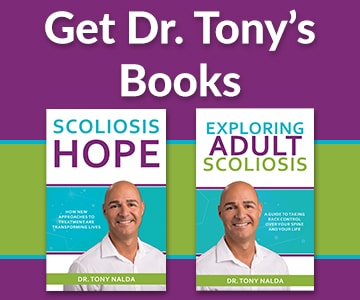 Ready to explore scoliosis treatment? Contact Us Now
Ready to explore scoliosis treatment? Contact Us Now